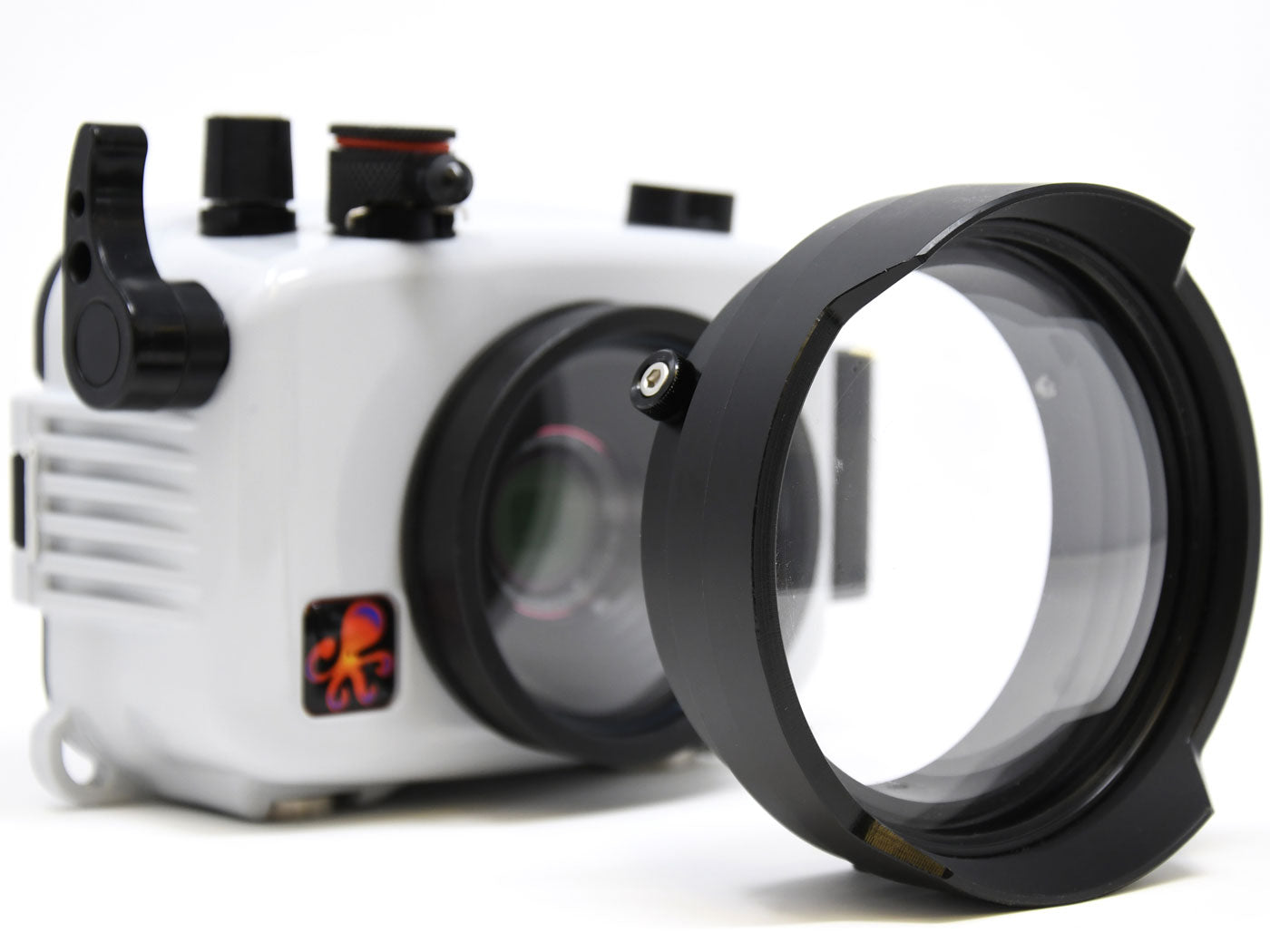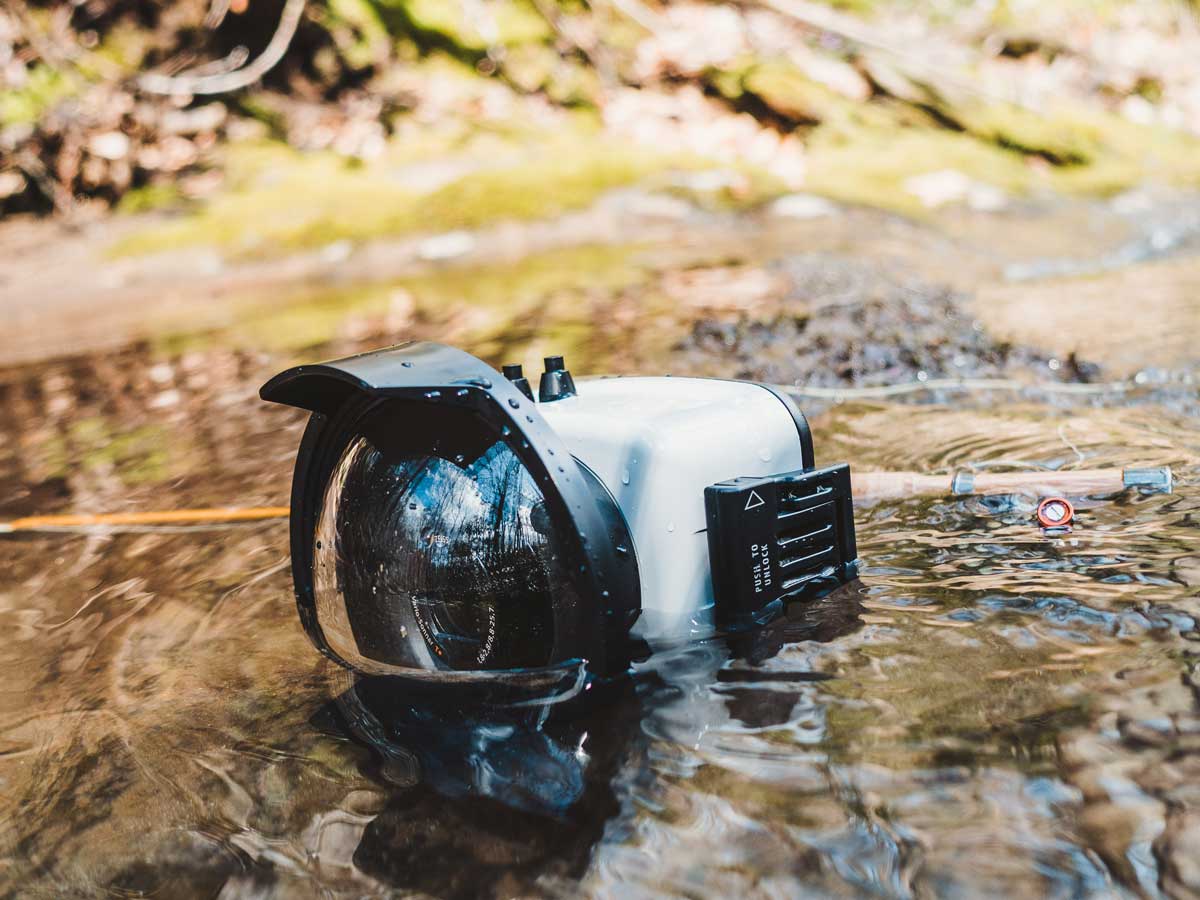By Jean Rydberg
Back in the days when we used drinking straws, you could put one into a glass of water and marvel at how it appeared significantly larger through the side of the glass below the water line. The same kind of thing happens when a camera goes underwater inside of a housing. To the camera, things appear to be magnified.
This magnification results in a narrower angle of coverage—meaning you can fit a lot less in your frame underwater. Wide angle domes and lenses de-magnify the image to give you a wider angle of coverage.

Refraction of light rays causes a drinking straw to look enlarged and broken when viewed through the side of a glass.
The bottom line on wide angle underwater: When you use a wide angle lens you are able to get much closer to your subjects and your images and video will appear sharper and more saturated.
What is an Air Lens
The terminology of wide angle can be confusing. There are wide angle conversion lenses, fisheye lenses, domes, air lenses, wet lenses, and on and on.
What we call a "wide angle dome" or "air lens" or is similar to the concept of an Ivanoff-Rebikoff corrector devised in 1960. It corrects for the aforementioned refraction and distortion effects of a flat port underwater. The unit is comprised of two elements, one domed and one flat, with air sandwiched in between.
In plain air above water it has absolutely no effect. You can look through it like you're looking through a window. But underwater, it is able to bend light to make the field of view larger.
How is an air lens different from a wide angle conversion lens? A wide angle conversion lens (often called a "wet lens" though this term can also refer to macro) is comprised of one or more optical lenses. These lenses will provide a wider angle of view both underwater and above water.
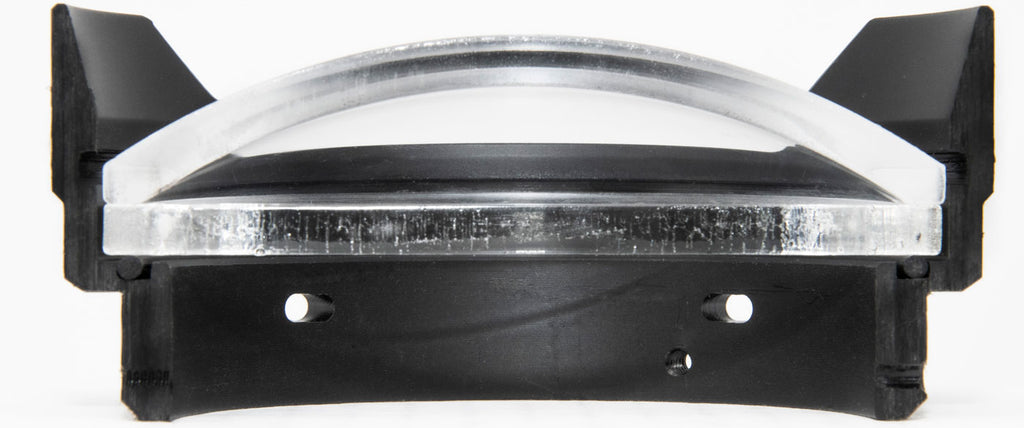
This bisection of a WD-3 Wide Angle Dome or "air lens" shows that there is an air pocket sandwiched in between the dome and flat surfaces. This air pocket bends light rays when the unit is submerged.
Magnification Factors
Air lenses restore the camera's original angle of coverage underwater. If your camera is set to 25mm underwater, you will have a 25mm field of view underwater. Any wide angle dome or air lens has the same magnification factor: approximately 0.75x.
An air lens will give you the same angle of coverage as a traditional dome port underwater. Interestingly, the edges of the image will be much sharper than with a dome port because of the additional flat port interface. So it seems like you would always want to do this, right? Turns out it's only really practical with lenses as wide as 25mm or so. Lenses 20mm or wider will vignette badly on a flat port.
Wide angle conversion lenses have a variety of magnification factors like 0.50x or 0.56x. A smaller number means a wider lens. Unlike an air lens, wide angle conversion lenses are optimized for a specific focal length (often 28mm) and a specific distance from the camera's lens. As this varies between camera and housing models, results will also vary widely (pun intended).
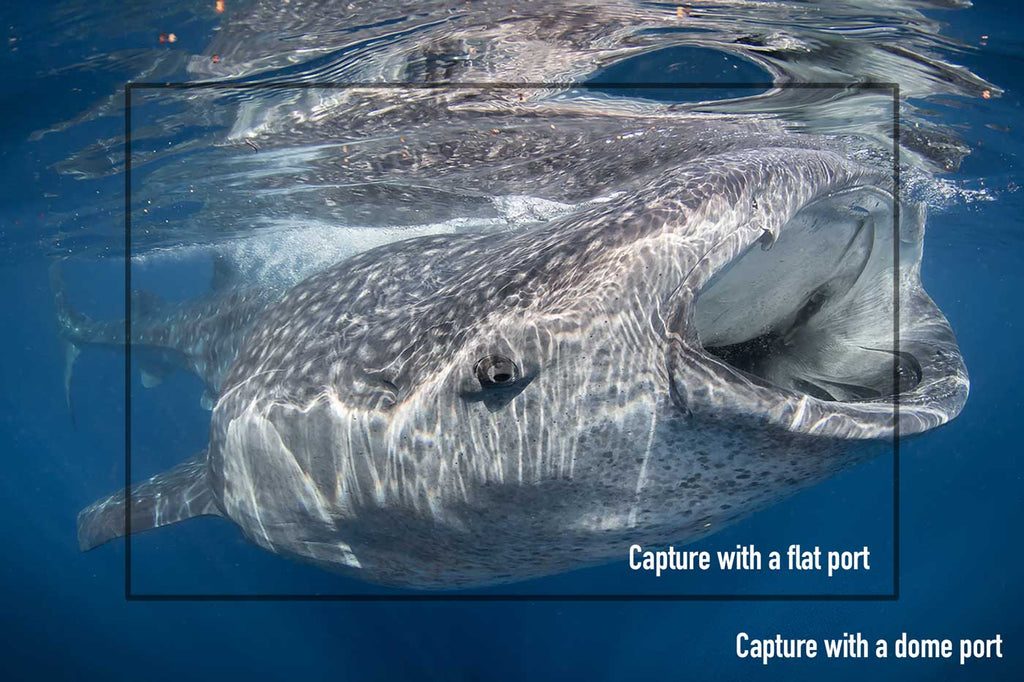
A flat port effectively magnifies your subject, resulting in a loss of coverage. A dome port allows you to capture about 25% more of the scene from the same distance.
Lightweight Above and Below Water
Without all of the heavy glass optics inside, wide angle domes are significantly lighter weight than wide angle conversion lenses on the market. The balance of weight with performance makes them easy to pack and significantly easier to handle than a heavier wide angle lens. In our experience nothing sinks faster than a fumbled wide angle lens underwater (ok, maybe your heart...)
| Ikelite WD-3 Wide Angle Dome | 0.37 lb | 168 g | $300 |
| Ikelite WD-4 Wide Angle Dome | 1 lb | 480 g | $300 |
| INON UWL-H100 M67 Wide Angle Conversion Lens | 1.22 lb | 555 g | $380 |
| Backscatter M52 Underwater 0.50X Wide Angle Conversion Lens | 1.25 lb | 566 g | $399 |
| AOI M52 UWL-04 Ultra Wide Conversion Lens for 28mm Cameras | 1.46 lb | 660 g | $425 |
| Kraken KRL-01 67mm Wide Wet Conversion Lens | 2 lb | 907 g | $765 |
| Nauticam WWL-1 Wide Wet Conversion Lens | 2.73 lb | 1240 g | $1150 |
| AOI UWL-09 PRO Underwater 130º Wide Angle Conversion Lens | 3.11 lb | 1410 g | $999 |
You don't exactly pay by the pound, but removing that glass also makes it lighter on your pocketbook.
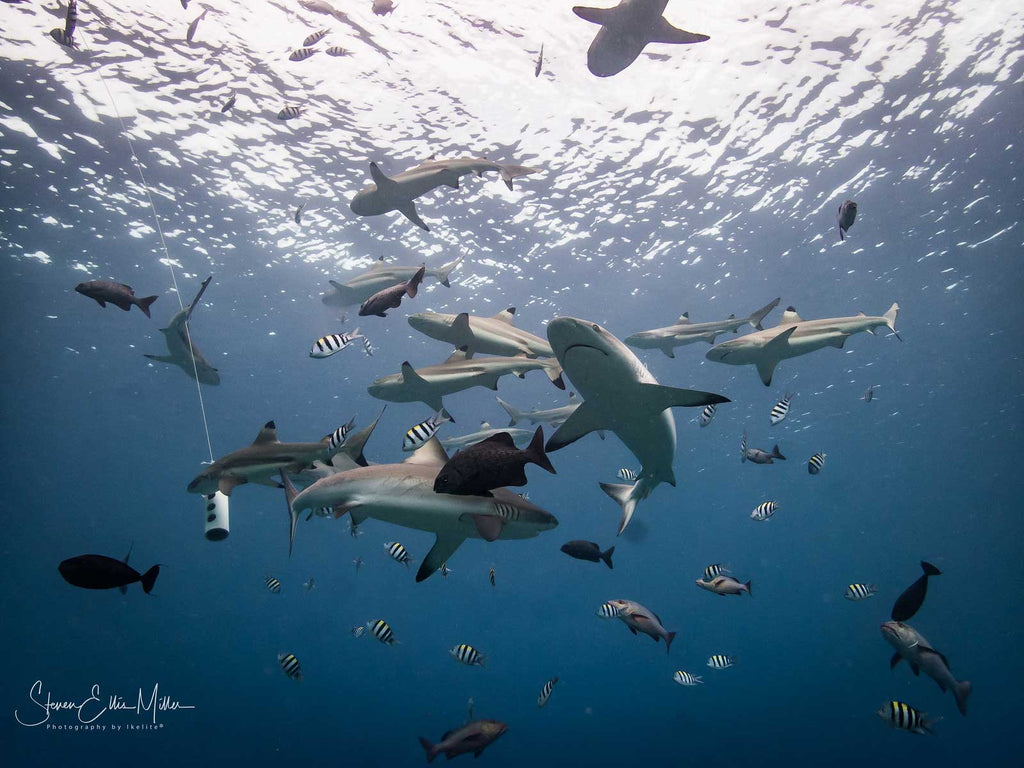
A wide angle dome aka "air lens" lets you get closer to the action, increasing color and clarity in your photos with or without artificial light.
No Vignetting
Vignetting occurs when the back of the wide angle lens is smaller than the field of view of the camera. The camera will see the edges of the lens. This could cause dark corners, or even a fully circular port hole effect, depending on the camera and lens combination. This is unavoidable with many wide angle conversion lenses due to the distance from the front of the camera's lens and the diameter of the lens' rear element.
Our wide angle domes use a clear flat element that extends past the outer diameter of the housing’s lens port. That means that there is zero vignetting at all points in the camera’s zoom range.

ISO 100 • f/3.2 • 1/500 • 30mm • The tentacles of this jellyfish is vibrant and crisp thanks to the WD-3 Wide Angle Dome on an Olympus Tough TG-5 camera. The slightly softness on the rear tentacles is caused by the super shallow depth of field caused by a wide open aperture.
Sharp and Distortion-Free Edges
Air domes simply correct for the air-to-water interface so that the camera sees the same thing that it would above water. This provides exceptional clarity and lack of distortion. The edges of the image are significantly sharper than with a wide angle conversion lens. Even the best wide angle conversion lenses tend to have a problem with edge blurring, color fringing, and distortion.
A wide angle dome is an excellent choice for shooting manmade objects like shipwrecks and piers because the straight lines will maintain a natural perspective. Wide angle conversion lenses will cause the straight lines to bend giving a slightly warped effect.

An Olympus Tough TG-5 with INON UWL-H100 Wide Angle Conversion Lens. Vignetting, edge distortion, and color fringing are evident around the edges of the frame. These issues are very common with Wide Angle Conversion lenses but not with air lenses.
No Threads
When we designed the wide angle dome it was important to us to avoid from threaded or bayonet mounts which can be finicky and difficult to attach and remove underwater. Fine threads like 52mm or 67mm will wear out over time and eventually need to be replaced.
The WD-3 and WD-4 use press-on designs that make them simple to attach to the housing and orient to your camera’s lens.

The WD-3 Wide Angle Dome simply slips over the front of the housing's port and stays in place with 3 thumbscrews. It's important to remove and reattach your dome after you enter the water to remove any bubbles and to ensure that water fills the space between the wide angle dome and the housing's port.
Both products feature extended shades to protect the dome and reduce unwanted reflections. A neoprene cover is included for added protection when the dome is not in use. The optical grade acrylic provides visibly identical image quality compared to glass yet is significantly lighter both above and below water. The dome may be cleaned and polished using the NOVUS polish kit.

A dome shade helps to reduce unwanted reflections and helps to protect the dome.
Wide angle domes are compatible with almost every Ikelite compact camera housing with a 3" or 3.9" diameter lens port. Refer to your housing model's web page for compatibility details.
Conclusion
While not as wide as an external wide angle conversion lens, wide angle domes or "air lenses" have several key advantages underwater. They are substantially lighter and easier to handle, are completely free of vignetting, and your images will be super sharp from corner to corner.
Wide angle domes are ideal if you want to shoot wide angle and macro on the same dive. The domes can be removed easily underwater for attachment of an external macro lens. Some cameras like the Olympus Tough TG-series can focus through their full zoom range behind the dome allowing you to shoot macro without removing the dome.
Wide angle domes are not well suited for over-under photography (or "split shots" where the frame is half-in, half-out of the water). You will be battling a double waterline as the water drains from between the air lens and the housing port. For this application you should consider a DC-series dome port instead.
The WD-3 and WD-4 are made in the USA by divers experienced in the design and manufacturing of underwater photography equipment. We back all of our products with advice, support, and service like no one else. If you have any questions about using an air dome with your system please contact us.











